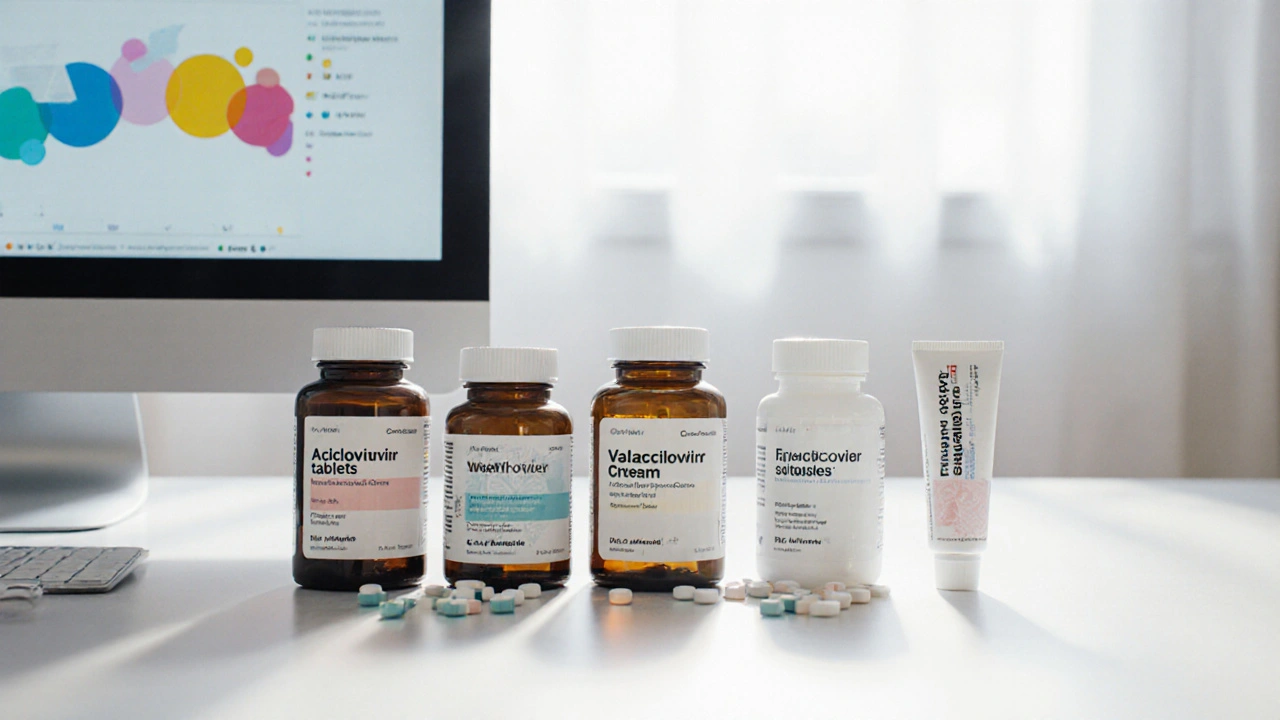Antiviral Alternatives: What You Need to Know
When talking about Antiviral Alternatives, any non‑standard option used to prevent or treat viral infections, ranging from off‑label pharmaceuticals to plant‑based extracts. Also known as viral therapy substitutes, it helps patients who can’t tolerate first‑line drugs or need a cheaper route. Antiviral drug a medication that directly targets viral replication mechanisms represents the mainstream approach, while Herbal supplement botanical products claimed to boost immunity or inhibit viruses offers a more natural angle. Understanding these entities is the first step toward making informed choices.
Why look beyond the classic pills? Antiviral alternatives often emerge because viruses develop resistance, side‑effects become intolerable, or costs skyrocket. In short, antiviral alternatives require knowledge of drug resistance, safety profiles, and patient preferences. For example, a resistant influenza strain may push clinicians toward older neuraminidase inhibitors or experimental compounds. At the same time, people with chronic conditions might favor herbal routes to avoid kidney stress. This dynamic creates a landscape where Vaccination preventive administration of weakened or dead viruses to stimulate immunity plays a complementary role, often reducing the need for any medication at all.
The market splits into a few clear buckets. Prescription antivirals cover drugs like oseltamivir, acyclovir, and newer protease inhibitors; they are backed by rigorous trials and dosing guidelines. Over‑the‑counter options include zinc lozenges and certain OTC cold remedies that claim antiviral activity, though evidence varies. Herbal and natural supplements—think elderberry extract, garlic oil, or green tea catechins—fall under the Natural antiviral supplement dietary product derived from plants or minerals with purported virus‑inhibiting properties. Finally, vaccine alternatives such as monoclonal antibody shots or passive immunoglobulin therapies broaden the toolkit, especially for immunocompromised patients. Each category influences treatment decisions differently, and the right choice often depends on the infection type, severity, and individual health status.
Choosing the Right Antiviral Alternative
When deciding which alternative fits your needs, start with efficacy: does the option have peer‑reviewed data supporting its use against the target virus? Next, weigh safety: are there known interactions with your current meds, or adverse effects that could outweigh benefits? Cost and accessibility also matter—some herbal products are cheap but unregulated, while newer antivirals may be pricey but offer predictable outcomes. Regulatory status provides a useful filter; FDA‑approved drugs carry a higher assurance of quality than supplements that rely on voluntary standards. By comparing these attributes, you can build a personalized antiviral plan that balances risk and reward.
Below you’ll find a curated collection of articles that dive deeper into specific alternatives, compare them side‑by‑side, and give practical tips for buying, dosing, and monitoring outcomes. Whether you’re hunting for a budget‑friendly over‑the‑counter option or evaluating the latest prescription updates, the posts ahead will arm you with the facts you need to make confident decisions.
